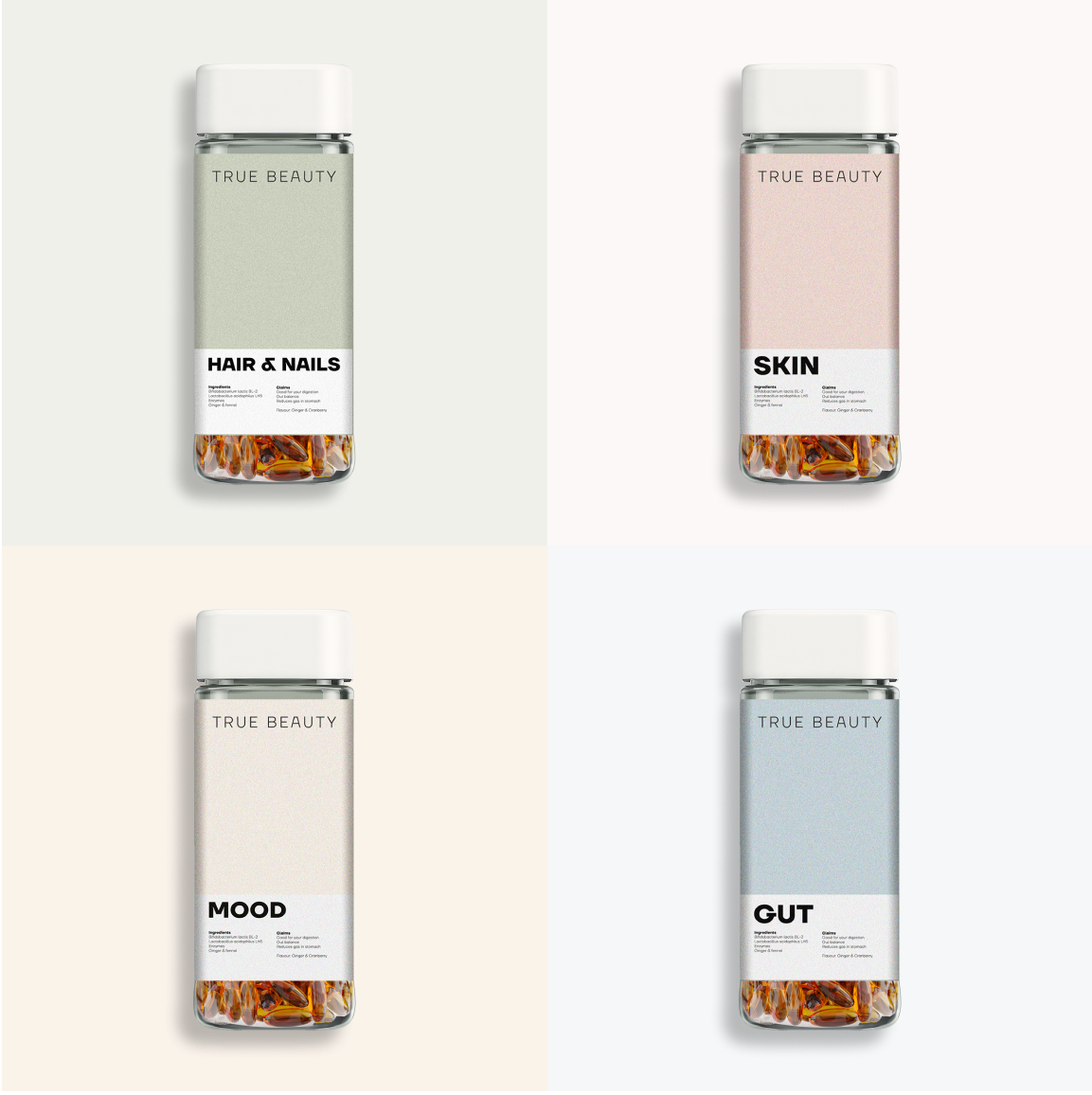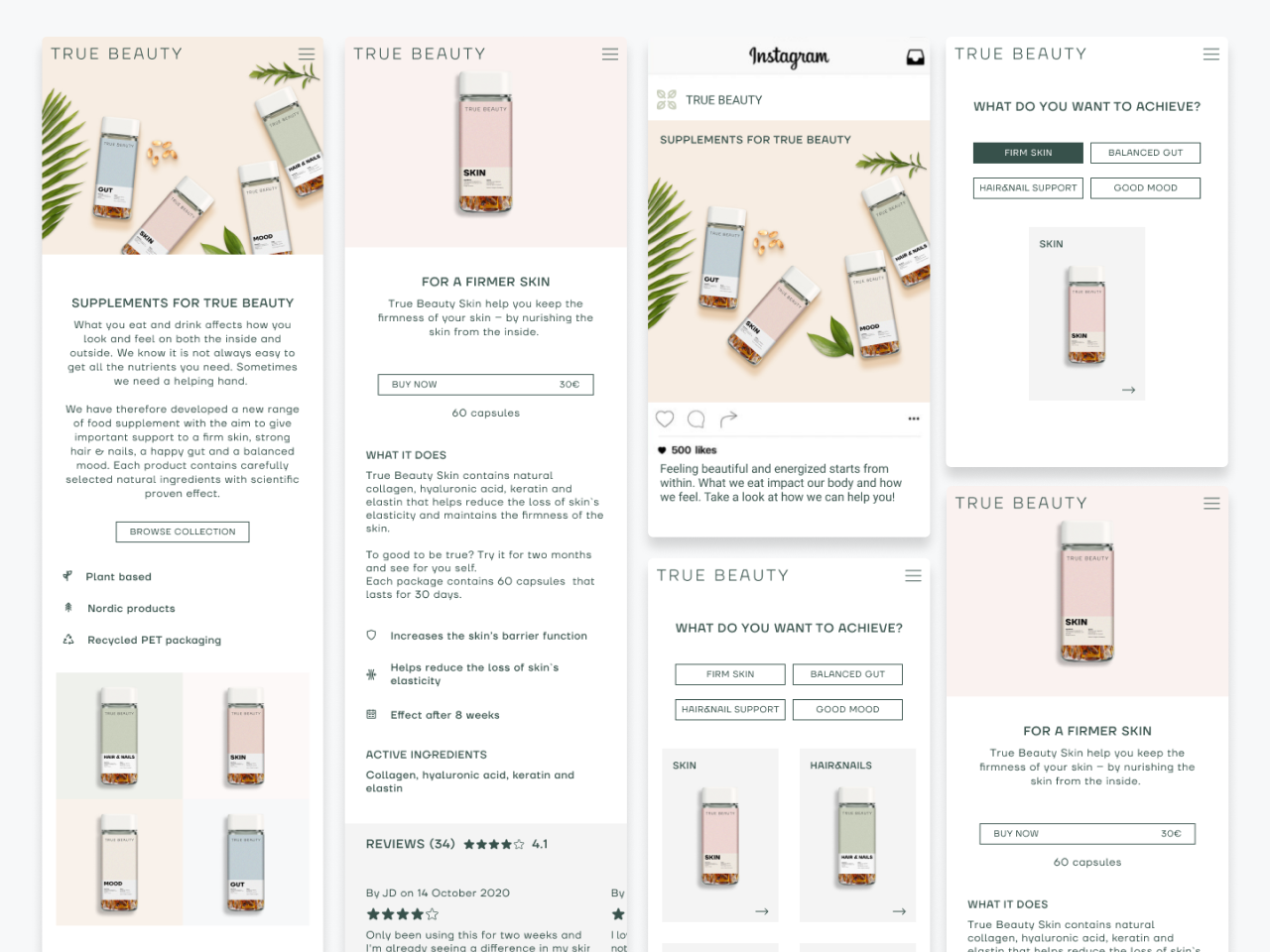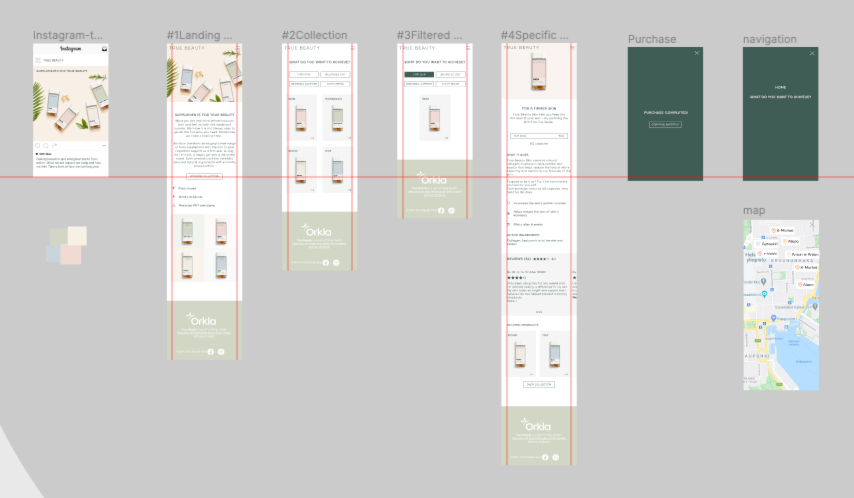Client: One of the biggest retail groups in Nordic Countries. The problem: the client was planning to launch a new line of health nutrition products. The process: we conducted a four days design sprint based on the design thinking and design sprint methodology. The solution: after we spent four days evaluating the problem and defining the solutions, we come up with the clickable prototype that was tested with five testers. We have validated the concept, tested the first version of the prototype, and collected the insights that were used in the iteration design sprint to make the final prototype.
Design thinking and design sprint
We attended design thinking workshops in the past and did the same exercise with the client. One of the main differences is that we limited the number of days to four, so it was the two days for the creative process and two days for the prototyping and testing. Using Design Thinking techniques, we broke down the problem into its most essential characteristics: clarity, impact, intention, and action. Based on the key features, we went ahead and explained the user's journey and his need. Finally, we listed out the goals and desired outcomes.

The problem the client was concerned about the creation of the brand, mediums, and the packaging of the product.
The process:
Explore to validate the requirements and validate that it is possible to build the page based on them. Make multiple hypotheses. Define in-depth and do heuristic research to discover the user journey. During the process, we created clickable prototypes using real-life circumstances.

We conducted a four days Remote Design Sprint based on the design thinking and design sprint methodology.

Our design process is based on the principles of Design Thinking. While Design Thinking is a framework for problem-solving and building solutions, Design sprints are a specific process of solving the answer. A practical solution to a problem demands, among other things, a willingness to change and think differently. Design thinking creates the right conditions for this. For instance, as we were mapping out the solution and to make our process more efficient, we went for small, frequent iterations. One of them focused the problem on smaller subsets to see if there is a problem with specific subgroups. After identifying the problem, we determined how we could solve it.

The solution;
After we spent two days evaluating the product patterns and touchpoints and done heuristic research, we come up with the set of the essential interfaces for the product.
The work in progress state
We came up with our solution from an end product-oriented perspective rather than focusing on the end product. We laid the strategy and called the shots simultaneously, rather than starting a design from scratch. As a result, we had a clickable prototype that we have tested using the loopback platform.

Key learnings: The experience design process could be extended by doing a staged design process which serves as a working feedback mechanism.
Conclusion
Fully optimized the process has the potential to contribute significantly to the overall product launch. Our four days of Design Sprint gave us a new perspective in working with designers and stakeholders and let us do more. Hence, I would like to request all designers, whether freelancers or full-time employees, to join more workshops on Product Design and Innovation so that together we can come up with simple yet beautiful ideas for our clients.
